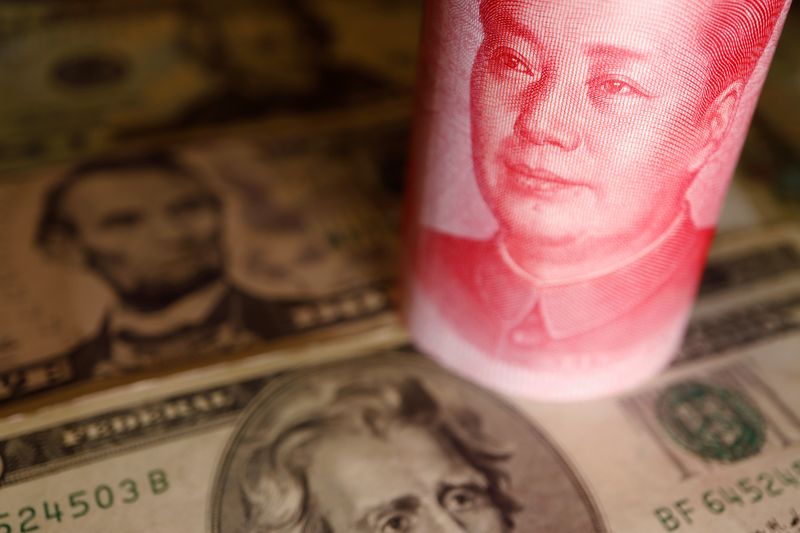
By Karen Brettell
NEW YORK (Reuters) -The dollar rose on Monday after Federal Reserve Chair Jerome Powell adopted a more hawkish tone on the economy, leading traders to pare bets that the U.S. central bank will cut rates by 50 basis points again at its next meeting.
Powell said recent revisions to data on economic growth, savings rates and personal income had removed some “downside risks” the Fed has been focused on.
He also said that he sees two more interest rate cuts, totaling 50 basis points, this year as a baseline “if the economy performs as expected,” and warned that it will likely take several years before housing services inflation cools to desirable levels.
“He took his hawkish pills,” said Steve Englander, head, global G10 FX Research and North America macro strategy at Standard Chartered (OTC:SCBFF) Bank’s NY Branch.
“Maybe the market is beginning to worry that they’re serious about doing 25 (basis point cuts), because there was a sense that that was just for show that they were going to front load, and here he’s talking about upside risks certainly in a way he didn’t talk at the FOMC.”
The U.S. central bank on Sept. 18 cut rates by 50 basis points, which Powell called a “recalibration” to account for the sharp decline in inflation since last year.
Powell noted that the economy remained strong but the central bank wanted to stay ahead of and stave off any weakening in the job market.
Traders are currently pricing in a 35% chance of a 50 basis point reduction in November, down from around 37% before Powell’s speech and from 53% on Friday, according to the CME Group’s (NASDAQ:CME) FedWatch Tool.
The dollar index was last up 0.42% at 100.86. The euro fell 0.34% to $1.1125. The greenback gained 1.17%to 143.85 Japanese yen.
Powell’s speech comes before a heavy week of U.S. data including the Institute for Supply Management’s manufacturing index on Tuesday and non-manufacturing report on Thursday, as well as job openings data on Tuesday and Friday’s closely watched employment report for September.
“This week is really about the jobs data,” said Marc Chandler, chief market strategist at Bannockburn Global Forex in New York.
Chandler said that another 50 basis points in cuts this year is most likely, adding that he only expects deeper cuts in the event of a “shockingly poor” employment report, which would be fewer than 100,000 jobs gains and/or a rise in the unemployment rate.
Economists polled by Reuters expect employers to have added 140,000 jobs in September and the unemployment rate is expected to stay steady at 4.2%.
Data earlier on Monday showed that German inflation fell to its lowest level since February 2021 this month.
Major brokerages, including Goldman Sachs and JPMorgan, now expect the European Central Bank to deliver a quarter-point cut at its Oct. 17 meeting, revising their forecasts on Friday on recent data showing economic weakness and slowing inflation.
The Australian and New Zealand dollars gained after China’s central bank on Friday lowered interest rates and injected liquidity into the banking system.
The Aussie, which is seen as a more liquid proxy for the Chinese yuan, was last up 0.09% at $0.6908. It earlier reached $0.69435, the highest since Feb. 2023.
The kiwi was up 0.03% at $0.6342 and earlier reached $0.63790, the highest since July 2023.

The yuan weakened 0.37% to 7.008 per dollar in offshore trading. It hit 6.9717 on Thursday, the strongest since May 2023.
In cryptocurrencies, bitcoin fell 3.73% to $63,355.
This post is originally published on INVESTING.



